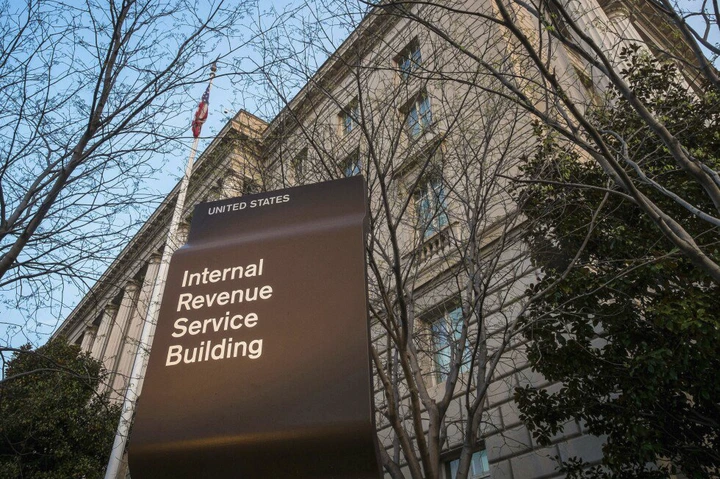
View pictures in App save up to 80% data.
The IRS is issuing approximately $2.4 billion to taxpayers who missed out on their COVID stimulus payments. By the end of January, around 1 million taxpayers can expect to receive special payments of up to $1,400 from the IRS.
The IRS announced that it will be issuing payments to taxpayers who neglected to claim the Recovery Rebate Credit on their 2021 tax filings. This credit is a refundable benefit available to individuals who did not receive one or more of the Economic Impact Payments (EIP), commonly referred to as stimulus payments.
"In a statement, IRS Commissioner Danny Werfel noted, 'Our analysis of internal data revealed that one million taxpayers missed out on claiming this intricate credit, despite being eligible for it.'"
Here’s everything you should be aware of regarding IRS payments.
Who qualifies to receive a check?
The IRS has announced special payments for taxpayers who submitted their 2021 tax returns but either left the Recovery Rebate Credit field empty or incorrectly reported it as $0, despite being eligible for the credit.
What amount of money can qualifying taxpayers expect to receive?
Payment amounts will differ, with a cap of $1,400 for each individual. Overall, the IRS plans to allocate approximately $2.4 billion to taxpayers who did not claim a Recovery Rebate Credit on their 2021 tax filings.
The IRS has posted information online about eligibility and how the payment was calculated.
The IRS is distributing stimulus checks as part of the government's efforts to provide financial relief to individuals and families affected by economic challenges, such as those stemming from the COVID-19 pandemic. These payments aim to help stimulate the economy by increasing consumer spending and supporting those in need during tough times.
The Recovery Rebate Credit is a refundable tax credit available for individuals who did not receive the Economic Impact Payments, commonly referred to as stimulus payments, in the years 2020 and 2021.
The IRS launched this initiative following an analysis of its internal data, which revealed that numerous eligible taxpayers who submitted their 2021 tax returns failed to claim the credit.
"To reduce complications and ensure that eligible taxpayers receive their payments swiftly, we are implementing an automatic payment system. This means that individuals will not have to navigate the lengthy process of filing an amended return to obtain their funds," stated Werfel.
If you qualify for a stimulus payment, it will be delivered to you through one of several methods, depending on how you filed your taxes and the information the IRS has on file. You may receive the payment via direct deposit to your bank account, a mailed check, or a debit card. If you have previously provided your bank information to the IRS for tax refunds, you are likely to receive the payment through direct deposit. If not, you can expect a physical check or debit card to be sent to your address.
If you meet the criteria for the Recovery Rebate Credit, there's no need for you to take any steps. The IRS intends to send notifications to eligible taxpayers regarding the special payment. These payments will be distributed automatically this month and are expected to reach recipients via direct deposit or check by the end of January. The funds will be directed to the bank account specified on the taxpayer's 2023 return or to the address that the IRS has on record.
What should I do if I still haven't submitted my 2021 tax return?
You could still have the opportunity to receive the funds. However, it's essential for taxpayers to submit a tax return and request the Recovery Rebate Credit by the deadline of April 15, 2025. This applies even if there was little to no income earned from employment, business activities, or other sources, as stated by the IRS.
There were three rounds of COVID stimulus payments issued in the United States. The first round was part of the Coronavirus Aid, Relief, and Economic Security (CARES) Act in March 2020, the second round was included in the COVID-Related Tax Relief Act in December 2020, and the third round was part of the American Rescue Plan Act in March 2021.
A total of $814 billion was distributed in three rounds of payments to households affected by the pandemic. The IRS determined the payment amounts based on taxpayers' income, their tax filing status, and the number of children or qualifying dependents they had.
In March 2020, as part of the CARES Act, qualifying individuals were granted payments of up to $1,200 for each income tax filer and $500 for each dependent child. Later, in December 2020, the Consolidated Appropriations Act provided eligible individuals with up to $600 per income tax filer and $600 for each child. Then, in March 2021, the American Rescue Plan Act offered eligible individuals payments of up to $1,400 for each income tax filer and $1,400 for every child.
__
The Associated Press is backed by the Charles Schwab Foundation, which provides funding for educational and explanatory reporting aimed at enhancing financial literacy. It is important to note that this independent foundation operates separately from Charles Schwab and Co. Inc. The AP maintains full responsibility for its journalistic content.